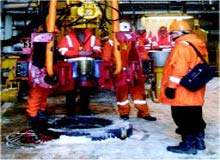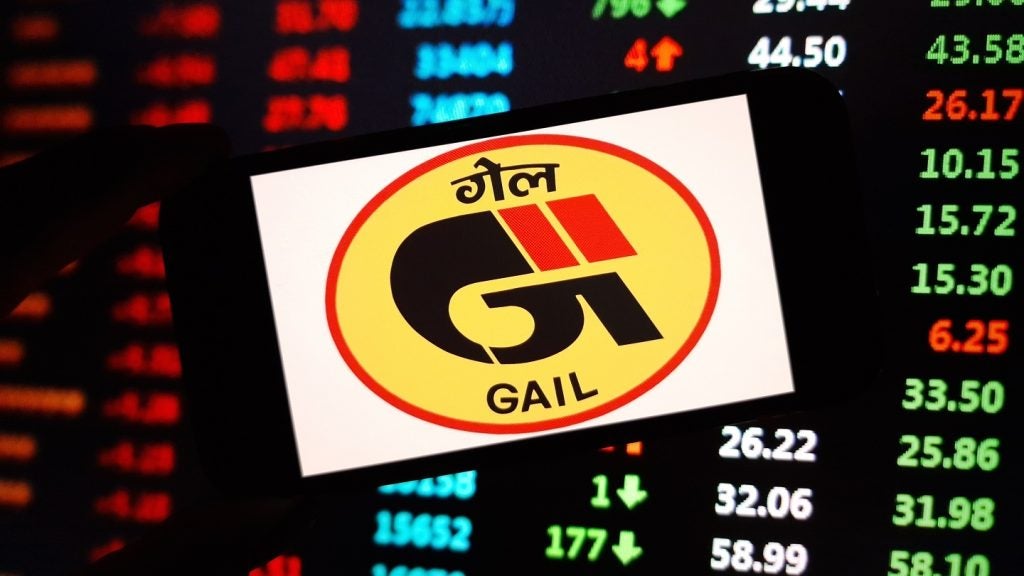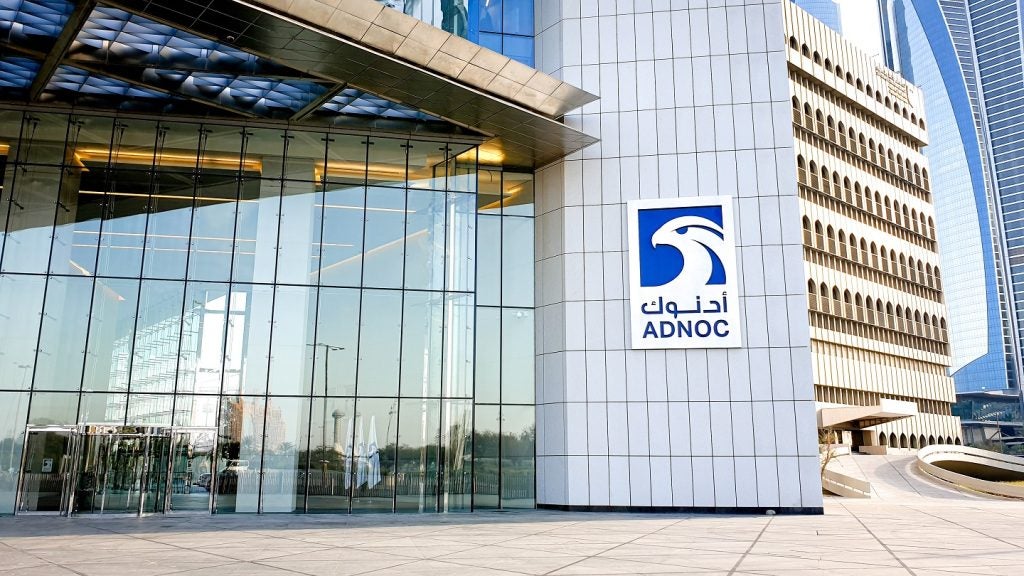
Well engineering has developed tremendously over the years. Placing wells in the reservoir exactly where they are needed has become a highly refined, high-tech art.
To illustrate the accuracy with which wells can be placed, imagine you are sitting in an average-sized room and that this room is an oil reservoir. The well would be barely visible – it would have the diameter of a human hair.
Imagine also that we can manoeuvre that hair through the room and make it land in the drawer under your desk or on your laptop. This is a pretty accurate feat and a good analogy for drilling a well, and we can now do this over huge distances.
Of course, sinking a well is only part of the process of producing oil and gas. Having created a well, we need to maintain well integrity. Once the well is producing, we want to optimise its oil and gas production. However, oil and gas are seldom produced cleanly. Sooner or later, all wells start to produce water and many produce sand, making it difficult to manage them properly and keep costs down.
WELL STABILITY
See Also:
When we drill a well, we have to find a way to keep the hole stable and make sure that it stays under control. You can’t drill a well to a great depth without protecting the part you have already drilled. In the shallower parts of the well, the pressure and the rock strength is usually lower than it is in the deeper parts.
How well do you really know your competitors?
Access the most comprehensive Company Profiles on the market, powered by GlobalData. Save hours of research. Gain competitive edge.

Thank you!
Your download email will arrive shortly
Not ready to buy yet? Download a free sample
We are confident about the unique quality of our Company Profiles. However, we want you to make the most beneficial decision for your business, so we offer a free sample that you can download by submitting the below form
By GlobalDataSo, when we’ve drilled a certain distance, and before hole problems start, the steel pipe is cemented into the hole. The drilling of the next section then continues with a slightly smaller bit.
This process, as well as the capacity of the well, dictates the size of the pipe you start off with at the surface, and it can be quite big. We can start off with 36in or 38in of pipe at the surface and end up with a 4.5in pipe at a target depth of 30,000ft. That requires a huge amount of heavy steel handling and large rigs to handle all that steel. It also means starting with big holes, which means that we generate an awful lot of drill cuttings that need to be handled and safely disposed of.
But imagine if you could start off with a pipe the same size as the hole required at the target. If you want a 7in well, you could start with a 7in pipe at the surface, expand the pipe and run the bit through, drill the 7in hole deeper, expand the next pipe and so on, to create a mono-diameter well. That would give us a fit-for-purpose well, but one drilled with much smaller equipment. It would have a much smaller footprint at the surface and generate a lot less waste, bringing big savings.
Initially pipe expansion was achieved using a slotted tube because it was thought that this would expand more easily than a solid tube. A cold process was employed: a dart or cone with a greater diameter than the pipe was simply pulled through the pipe, forcing it to expand. But it turns out that we can do the same thing with solid tubes.
There is a small expansion window where you can expand the pipe without it losing too much of its strength, so it remains fit for purpose in the well. Shell has already expanded pipes by over 30% in the lab and by almost 20% in the field.
No one has drilled a mono-diameter well yet, but Shell has tested the process with a test well in South Texas. Of course, it is all very well testing such a new technology on land. Taking it offshore is another matter. So the plan is to ‘de-risk’ the technology on land by deploying it in two more wells, before moving offshore.
EXPANDABLE PIPE JOINTS
The ultimate dream is a full mono-bore well all the way from the surface to the target, but in the meantime there are many useful things Shell can do using expandable pipe joints. The company has drilled some exploration wells in the Gulf of Mexico where it had been unable to reach its targets using conventional methods. However, using some intermediate pipe expansion and intermediate strings, Shell was able to reach deeper to achieve its target.
Another instance where Shell has used expandables is in gas well production. The tubing strings in gas wells are often tapered, and the smaller parts sometimes restrict gas production. In some cases, Shell has pulled the old tubing and replaced the tapered part of the string with an expanded piece of pipe, and then stepped the top part of the tubing in that. In this way, it was possible to increase gas well productivity by 50%–80%.
Sometimes wells are inadvertently damaged during construction. If a lot of drilling has gone on, sometimes the pipe becomes worn out or damaged and may leak. Repairing it can be very costly. Often we have to insert yet another pipe, effectively reducing the hole’s diameter in the process and jeopardising the productivity of the well.
In some cases, it may be necessary to plug back and sidetrack or even drill a new well. However, expandable pipes can be placed across the damage just as we would place a plaster on damaged skin, and with almost no reduction in hole diameter we can continue to operate the well as before, without expensive sidetracking.
EXPANDABLE RUBBER SOLUTION
Shell has found a way to make a rubber that expands – and only expands – at a given temperature in water of a given salinity. This material has exciting applications in managing well bore production. The rubber in the water will expand by well over 100%, but the expansion can be regulated by modifying the temperature and salinity.
Packers made from this material are a lot cheaper than the mechanical packers normally used in the industry. Also you can use as many rubber packers as you like, and the more you use the higher the pressure differential the material can stand.
The whole process is simple and inexpensive. There are many important applications for this material in well completion, production control and production management.
Natural fractures in the reservoir are quite common in carbonates. Initially these fractures often produce oil, but usually water quickly breaks through. Occasionally this will kill the well at an early stage in its life. Normally to manage such a situation, we segment the well with packers, inflow control valves and the like, but this is expensive.
Fortunately, we can now place a joint incorporating the expandable rubber material in the fracture. As long as the fracture is only producing oil, the rubber remains as it left the factory. But when the fracture starts producing water, the rubber begins to swell, and in a couple of weeks, the fracture will be completely closed off.
Something similar can be done with a watered-out zone that is too big to fix using a couple of e-zips. You can use a blank pipe with a couple of e-zips on either end and place that across it. As long as oil is being produced, nothing will happen, but if water breaks through, the packers at either end will start to swell and the blind pipe will close the watered-out zone off.
There is no well entry with this technique and nothing to be done. The well is selfhealing and completely safe. Shell has applied this in over 200 wells in Oman, where it has generated more than a million barrels of extra oil by keeping water levels down and wells flowing.
There are many applications for the new technology: in sand screen, gravel bag, inflow control valve and down-hole measurement and control equipment applications, for example.
Expandable sand screens are great enablers of inflow performance and good sand control. In Nigeria, they have increased individual well productivity by 1,000 barrels a day. That means a well producing 1,500 barrel of oil a day increasing production to 2,500 barrels a day. It is a technology that Shell has developed and is currently making commercially available to the industry. And it is one I’m very proud of.
These are some of the powerful new technologies and enablers that will help the oil business meet the challenges it faces today, as it reaches deeper and further for oil. These solutions will allow easier and cheaper well repairs and help producers avoid the drilling of sidetracks and new wells, leading to significant cost savings. Ultimately, the mono-diameter well will be realised, leading to even more dramatic reductions in the cost of oil production and the quantity of waste produced.







